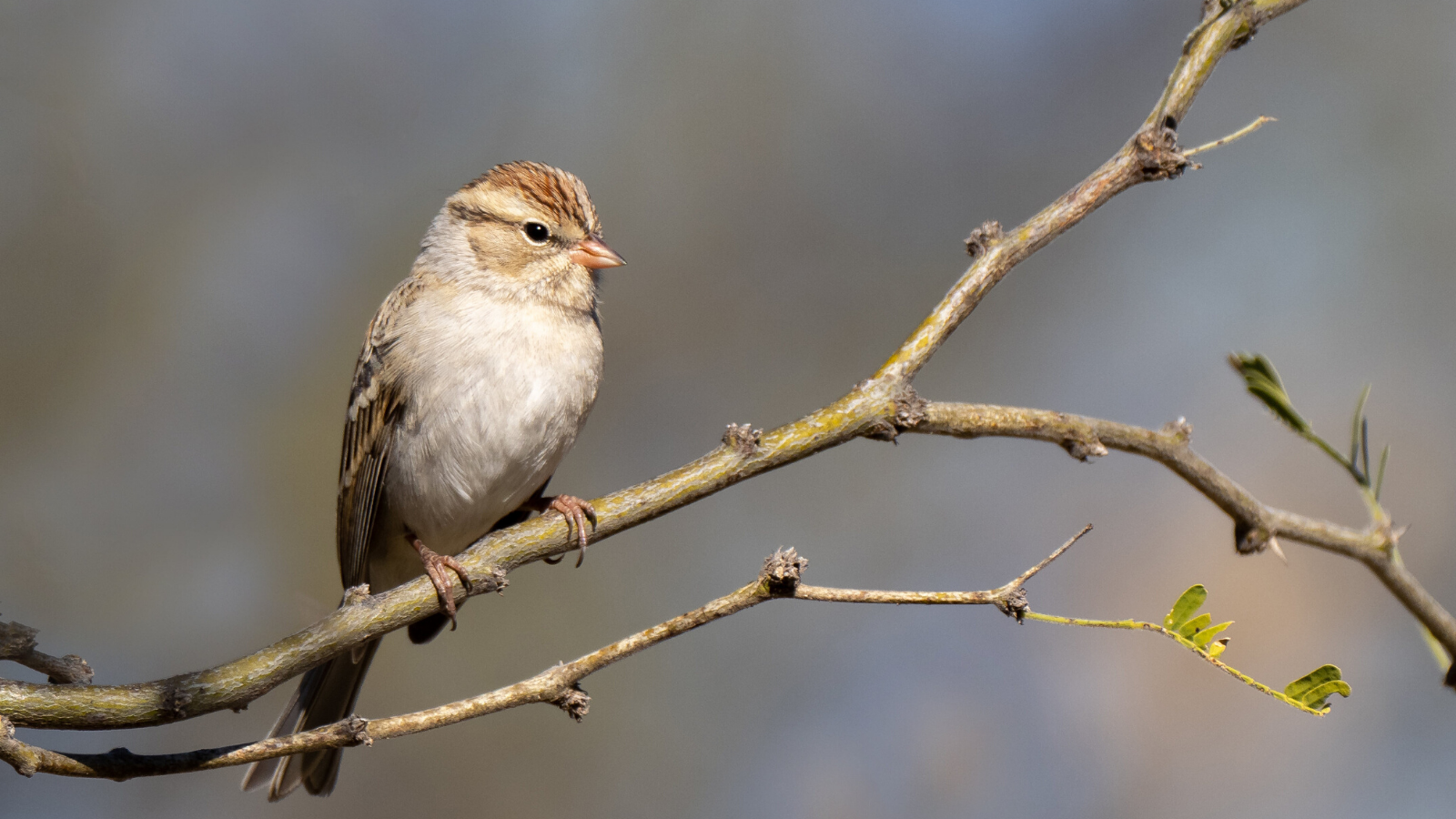Bird of the Month: Chipping Sparrow
Written by Andy McCormick
Andy McCormick, Former Board President of Eastside Audubon
The Chipping Sparrow is a bird of open woodlands and the borders of forest openings.
A RUFOUS-CROWNED DAPPER FELLOW OR LADY
Both the male and female Chipping Sparrows molt into a very classy alternative (breeding) plumage with a rufous crown set off by a white eyebrow (supercilium) stripe and a black line, which extends through the eye and the lores to the base of the bill. This black eye line is a good field mark for this bird in all plumages including that of juvenile chippers, and it separates this sparrow from all other rufous-capped sparrows (Dunne). The throat and chest of the adult are plain light gray but are streaked in the juvenile. The rump is gray.
The chipper forages in small flocks mostly on the ground and in low shrubs. When flushed, the group will fly up into a small tree. Its diet consists mostly of various insects in summer and a variety of seeds in the winter, but it will take both in any season.
A DRY TRILL HEARD IN SUMMER
The Chipping Sparrow is one of five North American sparrows in the genus Spizella, from the Greek spiza, a finch and the Latin diminutive, -ella. Passerina is Latin for sparrow (Holloway). The English name Chipping is for the short, clipped notes of its call. In truth, many sparrows have similar call notes, and these alone are not reliable in the field. Sibley comments that the Spizella sparrows sound very much alike.
However, the song of the Chipping Sparrow is distinctive as a dry trill sung at the same pitch and repeated often. It can be heard at any time of the day (Alderfer, Dunne). The song and call of the Chipping Sparrow can be heard at Macaulay Library.
Chipping Sparrow
Scientific Name: Spizella passerina
Length: 5.5”
Wingspan: 8.5”
Weight: 0.42 oz (12 g)
AOU Alpha Code: CHSP
MULTIPLE BREEDING PAIRS
The female Chipping Sparrow builds an open cup nest of grass, weeds, and animal hair usually in a conifer. Three to four pale blue-green eggs with dark markings are deposited and incubated by the female who is fed by the male. However, extra-pair copulations are common and male Chipping Sparrows will visit other territories and can mate with up to six females (Middleton). Both parents feed the young, which leave the nest in about 12 days after hatching (Kaufman). Many Chipping Sparrows have two broods per year.
STATUS AND DISTRIBUTION
The Chipping Sparrow has a breeding range that extends across North America from northern Canada to across the central United States, and it winters in the southern states, Mexico and parts of Central America. Despite this large range, in Washington the Chipping Sparrow is absent west of the Cascades and is usually found east of the Cascades (Middleton).
Northward migration can begin as early as February with Chipping Sparrows arrival in Washington around mid-April to early May. The breeding grounds are characterized by open, grassy, coniferous forests and edge groves of quaking aspen, dwarf birch, white spruce, and lodgepole pines, to name a few tree species. The Chipping Sparrow is very adaptive and has made use of areas cleared by humans including suburban lawns and golf courses. The continental population is healthy and does not require any management by humans (Middleton).
Photo credit: Mick Thompson. References available upon request from amccormick@eastsideaudubon.org.



